GARLIC MUSTARD
(Alliaria petiolata)
Other common names: Hedge garlic, sauce-alone, jack-by-thehedge, poor man’s mustard, garlic root, garlicwort, mustard root.
Weed Class/Rating: “B” Rated weed by ODA. “A weed of economic importance which is regionally abundant, but may have limited distribution in some counties”
Family: Brassicaceae
Lifecycle: Biennial, with two different forms in its first and second years.
Average Height: 1 to 3 feet tall
Leaves: Form in midsummer the first year. Lower leaves are dark green, kidney shaped, scalloped and two to four inches in diameter. Stem leaves are alternate, sharply toothed, triangular, and get smaller towards the top of the stem. Leaves feel hairless, unlike similar looking native plants.
Flowers: Flower stalks appear in the second year, blooming April through June in clusters at the top of the stem. Flowers are ¼ inch wide with four white petals that are narrow at base. The plant is quite showy.
Stems: Each plant usually produces one flowering stem. However, if a plant is cut or stepped on, many stems will form.
Roots: Root has an "S" or "L" shape just below the stem base. Roots crowns will grow new stems if they are not removed completely or if garlic mustard is cut.
Dispersion: Spreads by seed and can self-pollinate or cross-pollinate.
Seeds: Seeds typically germinate in fall or early spring. Each plant can produce more than 62,000 seeds per square meter and last in the soil for at least 10 years. Seeds are small and easily spread on animals, people, vehicles and also by water, birds and other vectors. Seeds can form on plants that are cut and left on the ground.
Impacts: Garlic mustard displaces native forest understory species, reducing diversity and decreasing forage availability for deer. It thrives in the partial shade of oak woodlands.
Other notes: When crushed between the fingers, the plant gives off a distinct garlic smell, distinguishing it from look-alikes. Although edible for people, it is not eaten by local wildlife or insects.
Toxicity: Not known to be toxic
Garlic mustard is an aggressive invasive species in the Pacific Northwest. Native to Europe, it was introduced in North America in the 1800s for culinary uses, though it has escaped cultivation to become a very serious invader in many states. Garlic mustard is competitive in a wide range of soils, sun, shade and moisture. This groundcover plant can grow in forests, wetlands, pastures, shaded roadsides, hiking trails, and people’s yards. Garlic mustard's curved root helps the plant hold on to the soil even on steep slopes with loose soil. It can grow under the shade of other plants like nettles or in bright sunny spots. Once established, garlic mustard may exude a chemical which impedes native shrub and tree establishment and hinders natural forest regeneration as well as displace other native plants.




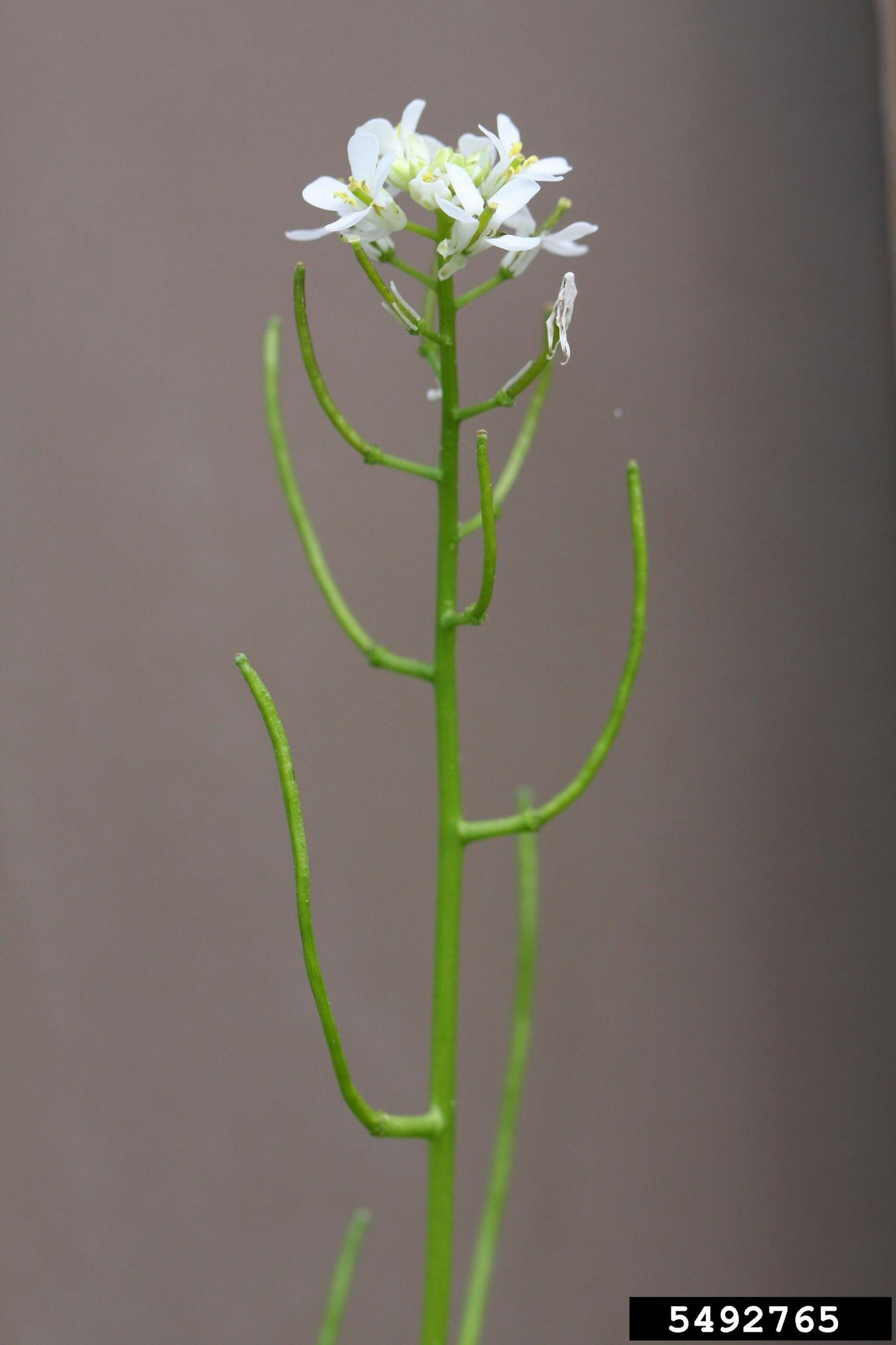
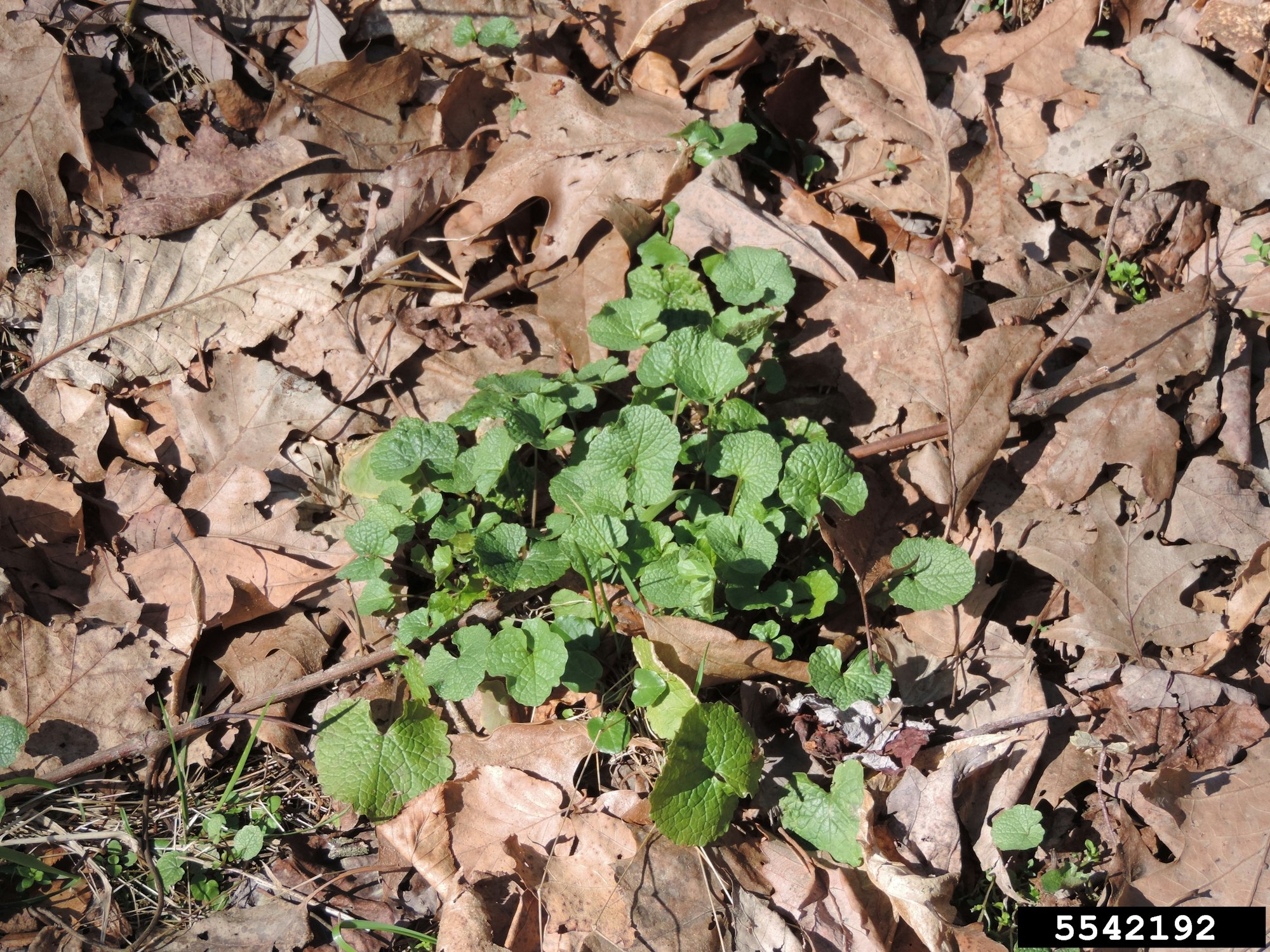

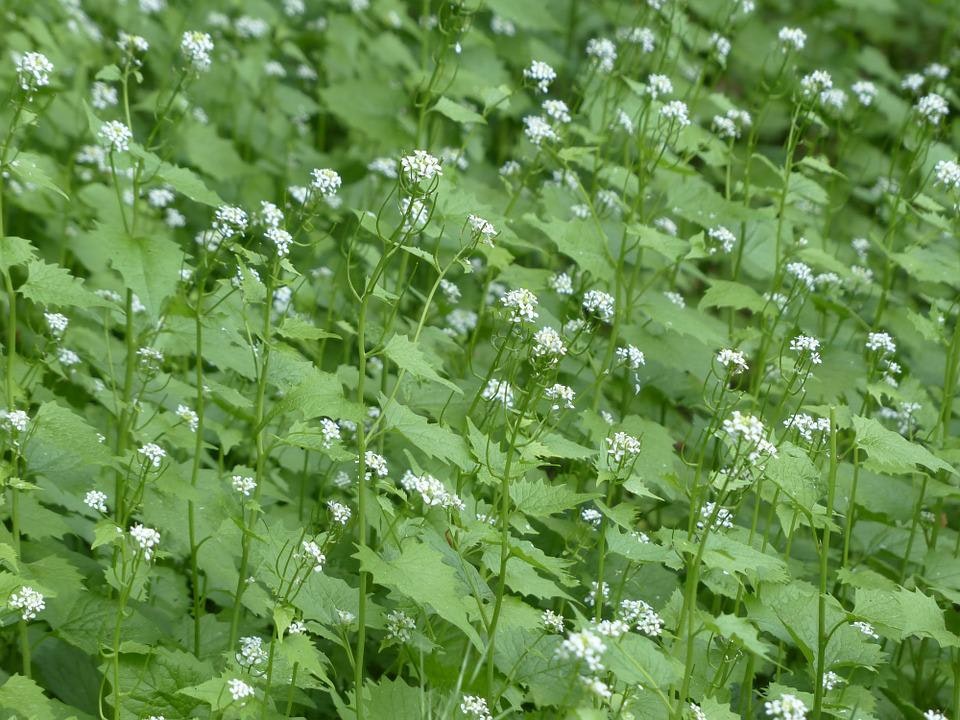

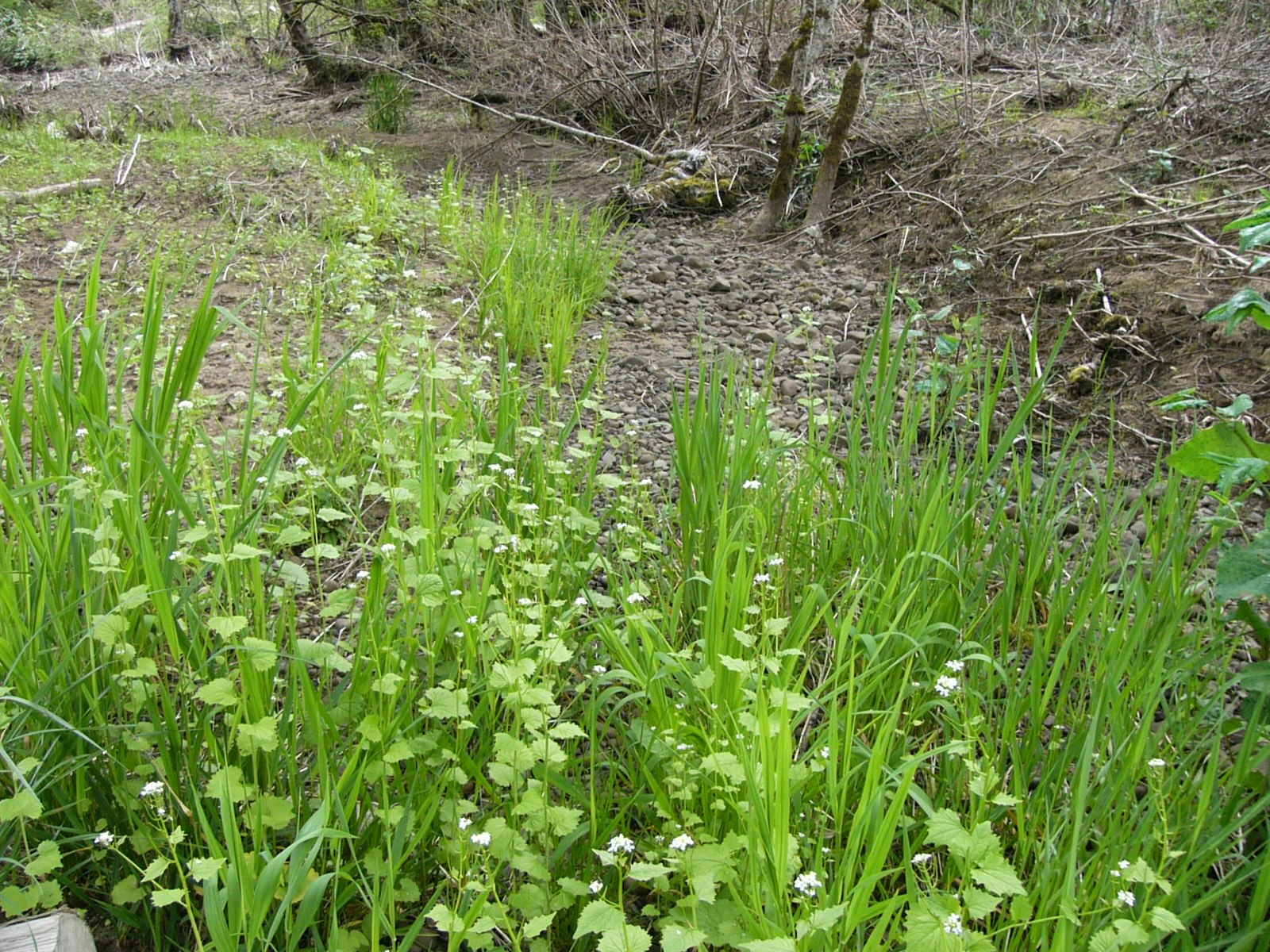


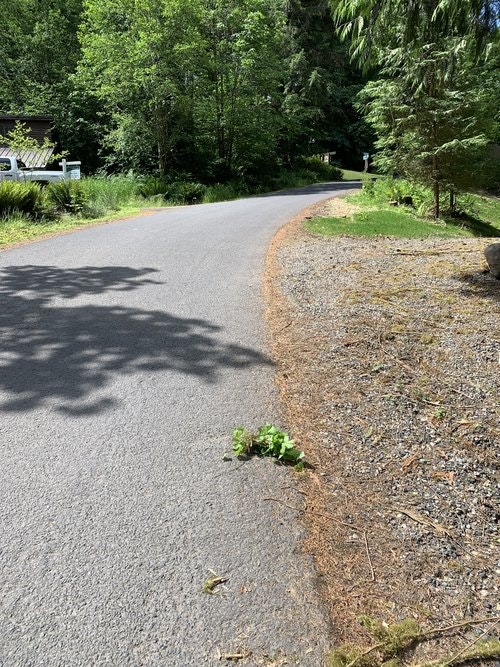













IF SEEN:
- Manual Control: Hand-pulling individual plants is effective if the entire root is removed. It is best to remove plants before they go to seed, as handling garlic mustard when seed pods are opening will scatter seeds. If the plant is flowering or seeding, all plant parts must be put in a bag and discarded in the garbage. Carefully and thoroughly clean off boots, clothes and tools before leaving the area to avoid carry in the tiny seeds to new sites. After the bulk of invasive plants are removed, re-plant the area with native plants. Continue to monitor the site.
- Chemical Control: Herbicide may be needed for large, dense infestations and should be applied in the spring or fall on seedlings and rosettes, with care taken to avoid native and other desirable plants. Please consult the local OSU Extension Office or Oregon Department of Agriculture before beginning any chemical treatment
Please contact us for free technical-assistance if you have garlic mustard growing on your property. You can also make an observation/track plants through iNaturalist.
RESOURCES:
- Oregon Department of Agriculture
- 4-County Cooperative Weed Management Area Garlic Mustard Fact Sheet
- King County Weed Identification
